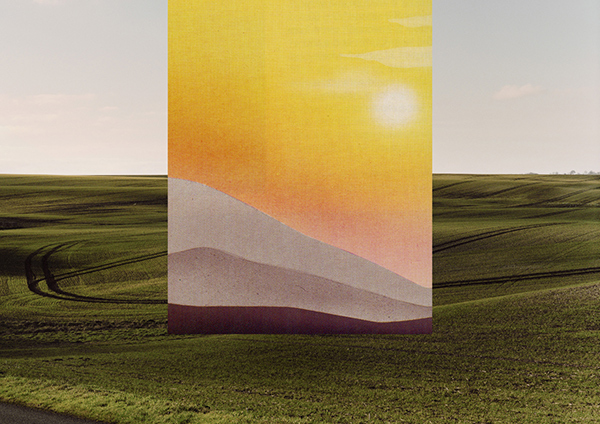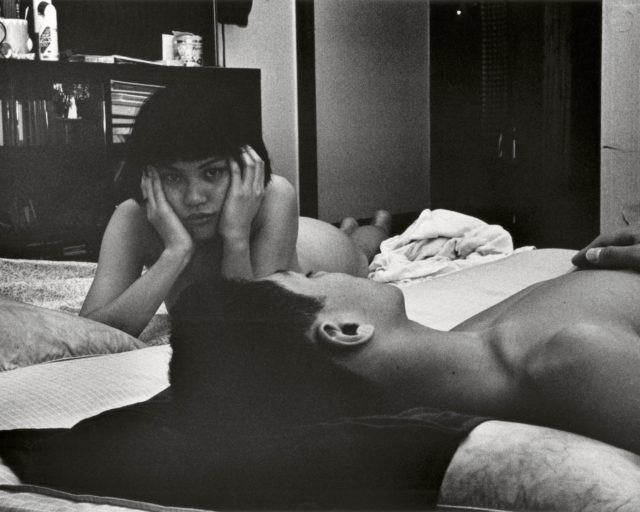Photography is Limitless
What does photography look like in 2017? Emilia van Lynden, artistic director of Unseen, discusses how photography can be inclusive, flexible, and fun.

Theo Simpson, Vanden Plas, 2017
© the artist and courtesy Webber Represents, London
Annika Klein: Who are three young photographers that you are particularly excited about exhibiting at Unseen Amsterdam for the first time? How do you see them breaking with tradition?
Emilia van Lynden: I’ll start with Theo Simpson, a young British artist from Northern England who is interested in the industrial heritage of the north, and who deals with the steel industry and mythical themes relating to that landscape. He uses archived imagery alongside his own photographs and local materials from the surrounding industries, often printing directly onto steel from local factories. Some of his works are laser cut directly into steel and then framed. They’re interventions in and with the landscape. Simpson’s work highlights the manner in which photography is evolving. It’s no longer a two-dimensional image. Right now, there are artists incorporating many different materials within their photography and, through that, they are creating an extra level of depth.
Then, Tanya Habjouqa, who makes very different work. She’s a documentary photographer, who will be showing with ILEX Gallery from Rome and is a member of NOOR Images. Habjouqa is showing a project called Sacred Space Oddity: The Un/Holy Land (2016–17), made in the Palestinian Territories. Habjouqa considers the overlapping religions of Judaism, Christianity, and Islam within this area. The border between sacred and profane. This region has been photographed so much, and Westerners have a particular image in our heads, but the region is very diverse. Habjouqa shows that these different groups of believers and non-believers living along side one another, and the manner in which they do so. Her approach is often humorous, which is unusual.
The last one is the youngest of the three—Alexandra Hunts. She is originally from Ukraine, but she’s been living in the Netherlands for a long time. Hunts is a sculptor and installation artist who uses photography as a tool. She is interested in documenting phenomena that cannot be documented. Hunts investigates scientific inquiries such as: How do you document what a kilogram is? Or, how do you document time? In her piece Search for the Kilogram (2016) Hunts went to search for the “true” kilogram: she worked on an apple farm where she picked, weighed, and photographed one-thousand kilograms of apples, one kilogram at a time. The result is an installation of one thousand cut-out photographs of mass. Another work named Ton (2016) resulted from this same period of time researching mass in which she tried to show how the metric system’s artificial units influence our experiences. Hunts highlights the fact that photography is limitless. There’s so much that one can do with the medium.

Tanya Habjouqa, She Immerses, 2016, from the series Sacred Space Oddity: The Un/Holy Land
© the artist and courtesy ILEX Gallery, Rome
Klein: Erik Kessels and Thomas Mailaender, who both work with reappropriation, will present an exhibition titled, Photo Pleasure Palace, mimicking a classic carnival. Kessels describes it as “weird-and-wonder land, a place where pleasure is guaranteed and photos are in imminent danger.” What will this mean in terms of the installation? Will there be carnival games? What do you have planned?
van Lynden: There will be seven key elements to the exhibition and they’re all fun fair activities. One of them is the Photo Fortune Teller, in which a professional fortune teller sits in a caravan. Artists can bring portfolios and the fortune teller will reflect on their work, predict their careers, and explain the reasons for artistic decisions that they have made in the past. The fortune-teller can also react to a recent acquisition of a collector can and analyze what their reasoning was for buying it.
The second is the Smash Gallery. Kessels and Mailaender have a massive archive, from which they have selected images that they will frame and hang on the wall. It’s the classic carnival activity where each person gets three wooden blocks and they have to try and hit something, except this time they are not aiming for empty tin cans, but for framed works. If someone hits the work and the glass breaks, then they get to take it home. The game asks the audience to consider how we think about art.
Another one, which might be my favorite, is called the Human Photo Album. Drawing on the same archive, but with different images, visitors can have images temporarily tattooed on to their bodies. There will be scantily clad figures who are covered from top to bottom in the archive, and who will apply the tattoos. Visitors will therefore use their own skin as the canvas and carry an image home with them on their bodies. The project looks at how we can interact with photography in a completely different way. Instead of taking the market too seriously, visitors can enjoy interacting with and looking at a photograph. There is something for everyone, for all ages. I think that’s what makes this project so special.

Klara Källström and Thobias Fäldt, The house arrest of Julian Assange, Norfolk, England, February 24–25, 2011, from the series Wikiland
© the artists
Klein: This year you are also launching CO-OP, a space devoted to “cutting-edge” collectives. How did this new initiative come about?
van Lynden: For the last four years, we’ve shown four artist-run collectives or initiatives per fair. The collectives loved connecting with a different audience and meeting a variety of collectors, and many collectives reached out to us wanting to participate. We constantly had to turn them away as we didn’t have enough space, or the collective wasn’t represented by a gallery. Therefore, we wanted to create a space for collectives who currently don’t have gallery representation, who do not have the sources to present themselves to such a large audience, and who need to be helped in order to be able to become more sustainable. I think that’s what’s at the core of CO-OP, increasing the sustainability of artists.
The fair system is also shifting. As an art fair and a platform, we want to be as inclusive as possible. If only galleries can exhibit, artists without representation have no way of participating. It’s our responsibility to create opportunities for as many artists as possible to get their work seen. Many artists who graduate from an academy might have the talent to create work, but don’t have the tools to live off of it. We have to make sure that they can actually survive doing what they’re best at—and that’s making art.

Apichatpong Weerasethakul, Tropical Malady (Sud Pralad), 2004
Courtesy the artist and Kick the Machine, Bangkok
Klein: International art fairs have proliferated in the past decade, and many take place in large spaces, isolated from the cities that host them. The fair can become a bubble. How does Amsterdam’s community influence the event? Do you work with local artists?
van Lynden: A third of our galleries are based in the Netherlands, the majority of which are in Amsterdam. Out of the 140 artists we are showing, over thirty are based in Amsterdam, including international artists Alexandra Hunts and Ola Lanko, both of whom are originally from Ukraine. It’s very important for us to show our visitors all that Amsterdam has to offer in regards to photography.
We have a city program where we work with leading institutions and project spaces. Amongst others, the Stedelijk will present their exhibition of Zanele Muholi, the photography museum FOAM will show their talent exhibition, EYE Film Museum is programming a major exhibition of Apichatpong Weerasethakul and Cao Guimarães, and Museum Van Loon will exhibit the site-responsive work of Güler Ates. There’s a huge variety. We’ll also be working with other project spaces that are showing less well known artists. For example, Glamcult, a youth culture platform, is presenting an exhibition by Barrie Hullegie in a studio located within the grounds of one of Amsterdam’s biggest night clubs.

Barrie Hullegie, Untitled, 2017
© the artist
Klein: As the lines between mediums become increasingly blurred, what is the value of an event or platform that focuses on one specific medium?
van Lynden: It shows the variety of photography, and how far it can go. We’ve always wanted to be an event that is reasonably niche, that’s why we really focus on emerging talent and the newest developments within the medium because we believe that this is missing in the art fair sector. Additionally, the general public still has to warm to the idea that photography is a collectable medium, or at least to the intricacies of collecting photography. We still need to inform our audience in regards to the diversity that photography has to offer.
Visit Aperture at Unseen Amsterdam, on view from September 22–24, 2017.

























